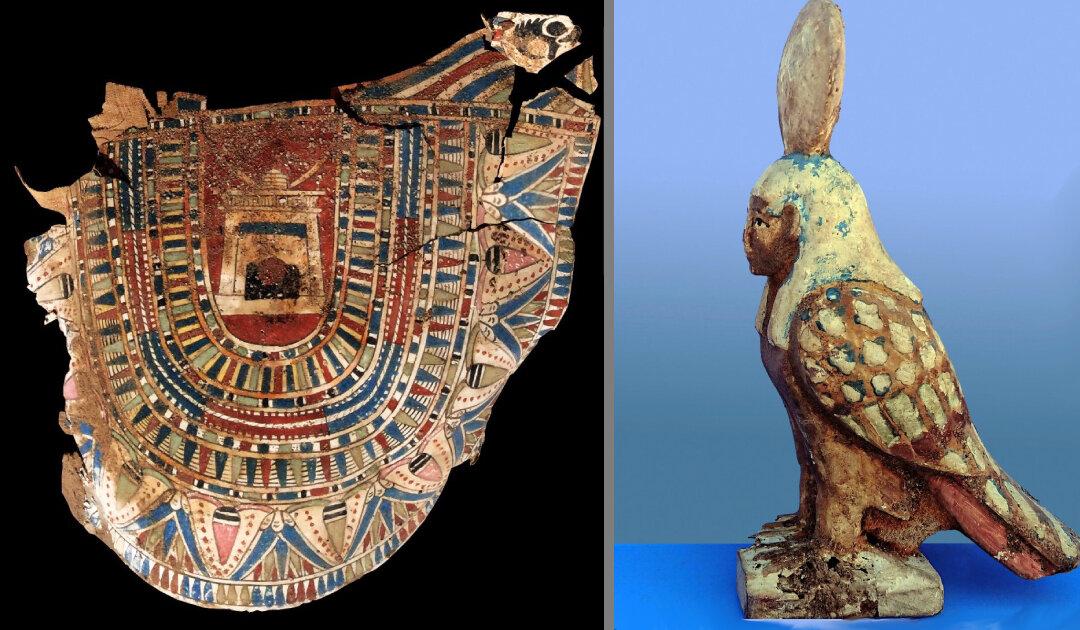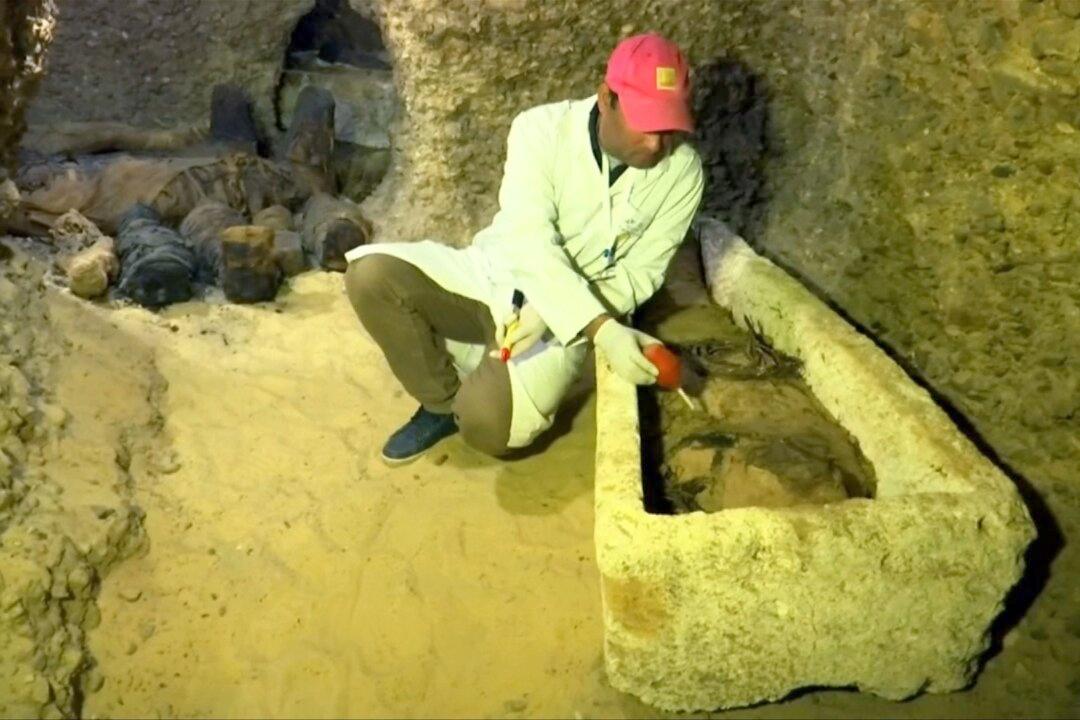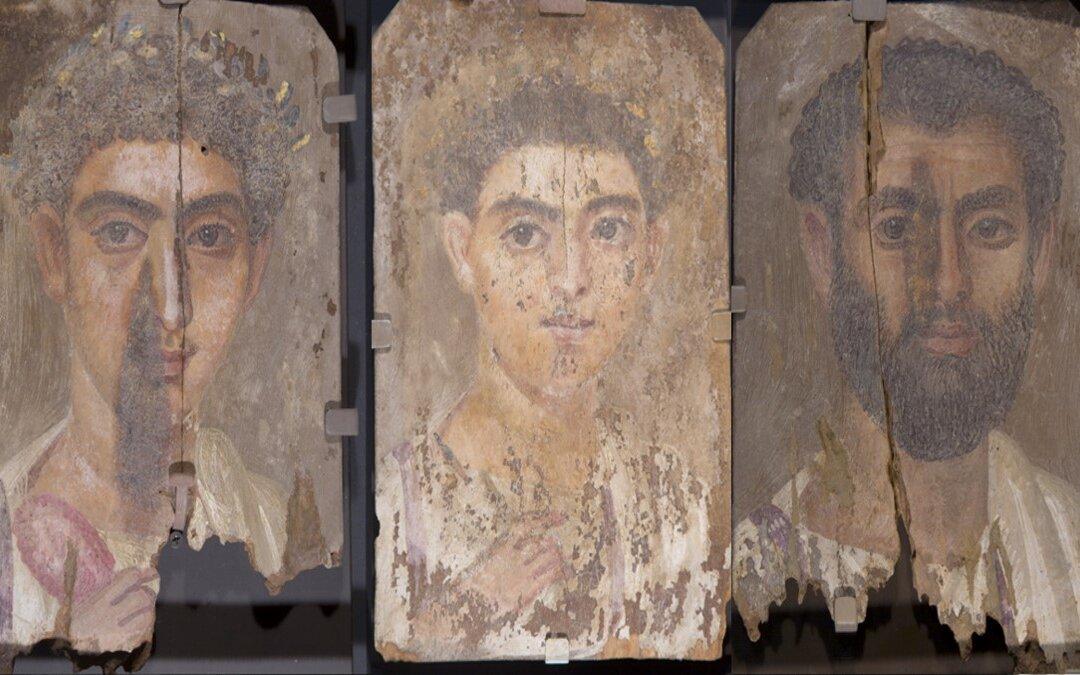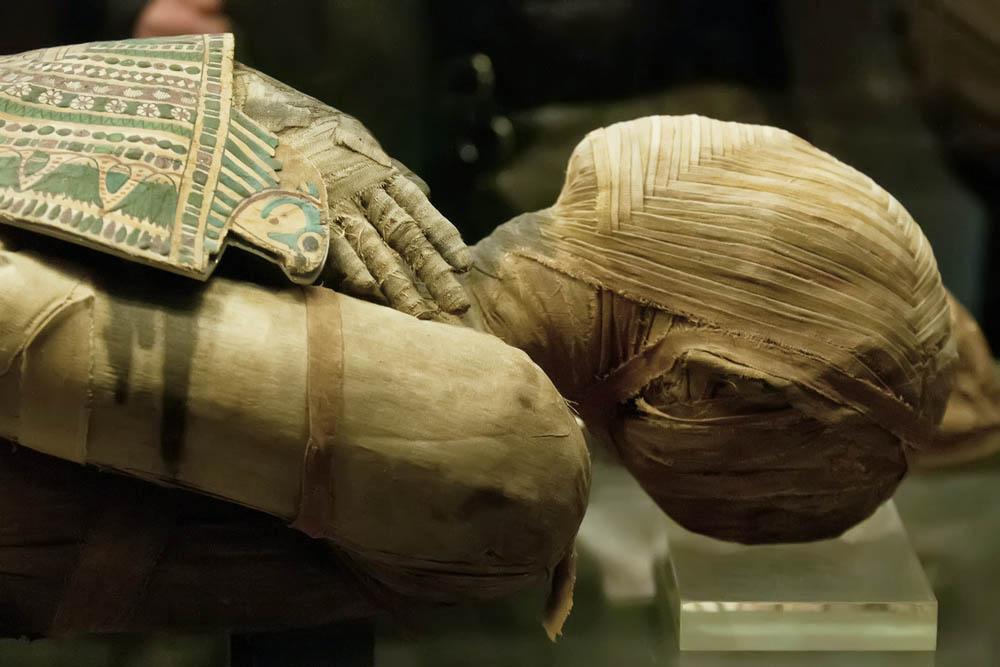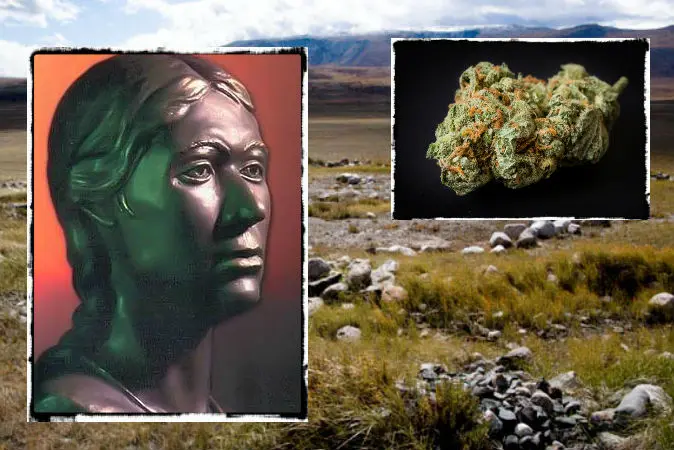Focus
mummies
Egyptian Blue Hides in These Mummy Portraits
Dusting off 15 Roman-era Egyptian mummy portraits—mostly untouched for 100 years—has revealed a 2,000-year-old surprise.
|
Many Ancient Egyptian Animal Mummies Have Little To No Skeletal Remains (Video)
A BBC documentary shows scientists revealing that most of the 800 ancient Egyptian animal mummies they scanned do not contain full skeletons; in fact, many contain no animal remains at all.
|
Art, Meds, and Fuel—The Surprising Historical Uses of Ancient Mummies
It was not too long ago that mummies were used in unconventional ways—as drugs, as entertainment, and perhaps even as fuel.
|
First of an Estimated 1 Million ‘Mummies’ Unearthed in a Cemetery South of Cairo (Video)
Preserved in the hot dry desert of Egypt may be one of the largest grave sites ever discovered.
|
The ‘Unlucky Mummy’ Said to Have Sunk the Titanic
Strange occurrences have been said to eddy around an ancient Egyptian artifact, known as the “Unlucky Mummy,” since it was taken from Egypt to Europe in the 19th century.
|
How Ancient Japanese Monks Mummified Themselves to Death
Over 1,000 years ago, a practice was pioneered by a Japanese priest named Kukai, which was intended to demonstrate the ultimate act of religious discipline and dedication – self-mummification.
|
CT Scans ‘Unwrap’ Secrets of 3 Mummies (+Video)
Scientists have put three unusually motionless patients through the CT scanner: Egyptian mummies.
|
2,500-Year-Old Siberian Mummy: Ancient Princess Used Cannabis to Treat Breast Cancer?
Preserved by ice, the ancient woman, who died at the age of 25 and is covered in tattoos, used cannabis to cope with her ravaging illness.
|
Clonycavan Man: A 2,300-Year-Old Murder Mystery
In March 2003, the body of a man who lived during the Iron Age was discovered in a peat bog in Ireland. Known as the Clonycavan Man, the well-preserved remains indicate that the body was not that of a man who died a natural or honorable death, but one who was brutally murdered. The mysteries surrounding his death are plentiful. Who was this man? Why was he so brutally murdered? How was his body so well preserved for so many years? And what is the significance of his highly groomed hair?
|
Why Did Ancient Scots Prepare ‘Frankenstein’ Mummies?
At first, it appeared to be a typical Bronze Age discovery, but the researchers soon discovered that the finding was far from normal.
|
Gummy Mummies: Egyptians Used a Millennia-Old Embalming Recipe
scientific evidence has shown that prehistoric Egyptians experimented with techniques to preserve bodies around 4000BC, some 1,500 years before artificial mummification was believed to have begun.
|
Ancient Bog Mummies Reveal Secrets of Their Identities
No one knows for sure who these people were and how they ended up in the bogs thousands of years ago, but it seems that most bodies are not just the remains of unlucky people who fell in after losing their way as many of them display signs of violent deaths.
|
5 Heart-Warming and Heart-Breaking Archaeological Discoveries
When describing the discovery of an ancient love letter placed upon the body of a loved one, Chris Scarre, head of the archaeology department at the University of Durham, said: “Archaeologists who investigate tombs are often moved to wonder about the character of the deceased, the thoughts of the mourners and their hopes and fears on the passing of a person dear to them.”
|
Egyptian Blue Hides in These Mummy Portraits
Dusting off 15 Roman-era Egyptian mummy portraits—mostly untouched for 100 years—has revealed a 2,000-year-old surprise.
|
Many Ancient Egyptian Animal Mummies Have Little To No Skeletal Remains (Video)
A BBC documentary shows scientists revealing that most of the 800 ancient Egyptian animal mummies they scanned do not contain full skeletons; in fact, many contain no animal remains at all.
|
Art, Meds, and Fuel—The Surprising Historical Uses of Ancient Mummies
It was not too long ago that mummies were used in unconventional ways—as drugs, as entertainment, and perhaps even as fuel.
|
First of an Estimated 1 Million ‘Mummies’ Unearthed in a Cemetery South of Cairo (Video)
Preserved in the hot dry desert of Egypt may be one of the largest grave sites ever discovered.
|
The ‘Unlucky Mummy’ Said to Have Sunk the Titanic
Strange occurrences have been said to eddy around an ancient Egyptian artifact, known as the “Unlucky Mummy,” since it was taken from Egypt to Europe in the 19th century.
|
How Ancient Japanese Monks Mummified Themselves to Death
Over 1,000 years ago, a practice was pioneered by a Japanese priest named Kukai, which was intended to demonstrate the ultimate act of religious discipline and dedication – self-mummification.
|
CT Scans ‘Unwrap’ Secrets of 3 Mummies (+Video)
Scientists have put three unusually motionless patients through the CT scanner: Egyptian mummies.
|
2,500-Year-Old Siberian Mummy: Ancient Princess Used Cannabis to Treat Breast Cancer?
Preserved by ice, the ancient woman, who died at the age of 25 and is covered in tattoos, used cannabis to cope with her ravaging illness.
|
Clonycavan Man: A 2,300-Year-Old Murder Mystery
In March 2003, the body of a man who lived during the Iron Age was discovered in a peat bog in Ireland. Known as the Clonycavan Man, the well-preserved remains indicate that the body was not that of a man who died a natural or honorable death, but one who was brutally murdered. The mysteries surrounding his death are plentiful. Who was this man? Why was he so brutally murdered? How was his body so well preserved for so many years? And what is the significance of his highly groomed hair?
|
Why Did Ancient Scots Prepare ‘Frankenstein’ Mummies?
At first, it appeared to be a typical Bronze Age discovery, but the researchers soon discovered that the finding was far from normal.
|
Gummy Mummies: Egyptians Used a Millennia-Old Embalming Recipe
scientific evidence has shown that prehistoric Egyptians experimented with techniques to preserve bodies around 4000BC, some 1,500 years before artificial mummification was believed to have begun.
|
Ancient Bog Mummies Reveal Secrets of Their Identities
No one knows for sure who these people were and how they ended up in the bogs thousands of years ago, but it seems that most bodies are not just the remains of unlucky people who fell in after losing their way as many of them display signs of violent deaths.
|
5 Heart-Warming and Heart-Breaking Archaeological Discoveries
When describing the discovery of an ancient love letter placed upon the body of a loved one, Chris Scarre, head of the archaeology department at the University of Durham, said: “Archaeologists who investigate tombs are often moved to wonder about the character of the deceased, the thoughts of the mourners and their hopes and fears on the passing of a person dear to them.”
|

